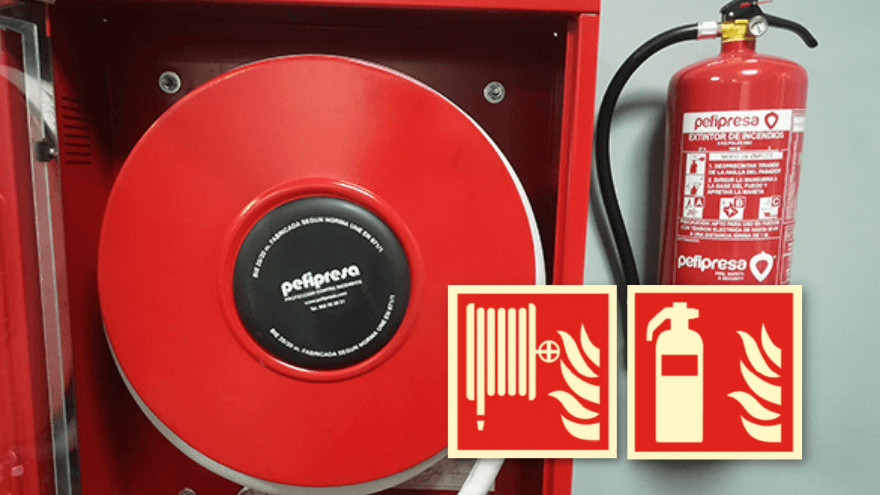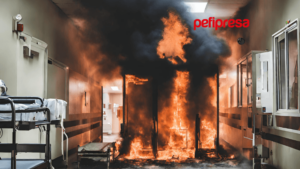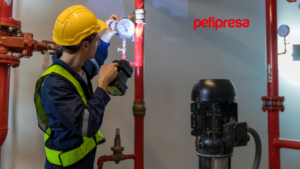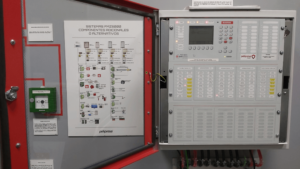Fire signals play a primary role in any environment. These are a type of signs related to firefighting equipment that give us sufficient information about the equipment available, where they are located and how to act.
However, we must be very clear that these fire signs or fire signs should not be placed at random or with any information. In fact, it is an aspect that is duly regulated in the UNE 23033-1:2019 regulation, which has its reference in the criteria of the UNE-EN ISO 7010:2020 + A1:2020 standard.
In this article we want to give you complete information on what types of fire signs are the most common and what is the regulation that regulates them, as well as how fire signs should be indicated.
Types and materials of fire signs
There are different types of fire signs that we must be aware of and that, therefore, we must know in order to identify them properly.
The first thing we must be clear about is that they are fire protection signs and that their main function is to be a help in the event of an unexpected fire.
These fire signals have very specific functions that we summarize below:
- To be an indicator of signs relating to fire-fighting equipment. These signs will help us to know where the fire equipment is located and to know where the emergency exits are and the evacuation routes to follow in case of fire.
- On the other hand, these fire signs or fire signs are intended to illuminate in the dark the places where the protection equipment, fire extinguishers, exits and any other protection element are.
- These fire signs must be luminescent, so that in the event of a power outage, it is possible to continue seeing them and find the fire signs.
There are different fire signs that we indicate in the following lines.
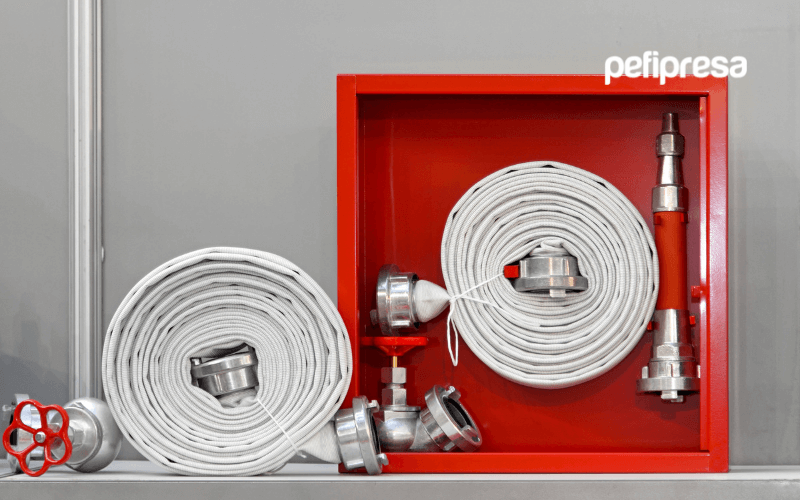
Signs identifying fire equipment
Fire equipment signs inform you that there is a fire equipment at a certain point in the building.
These are signs that will warn you that there is a fire extinguisher, a hose, or any other element that can help fight a fire. These fire equipment signs are very important.
Fire Extinguisher Signs:
These types of signs are located in places where there is a fire extinguisher, and are placed on top of the equipment. Depending on whether the extinguisher has CO2 or is ABC, it will also be indicated on the sign.
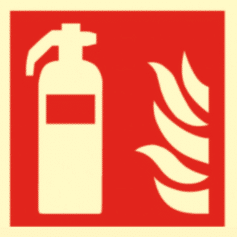
Fire Extinguisher Sign
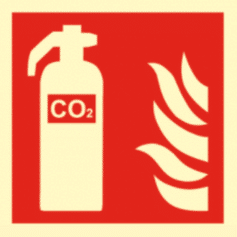
CO2 Fire Extinguisher Sign
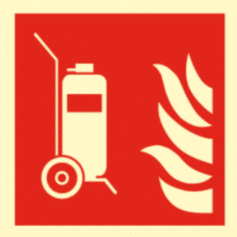
Fire Extinguisher Mobile Column Sign
Other Fire Equipment Signs:
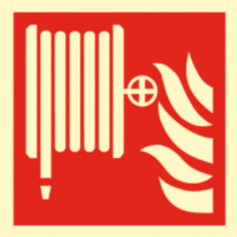
Fire Hose Reel Sign
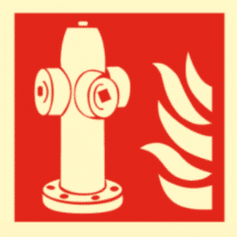
Hydrant Sign
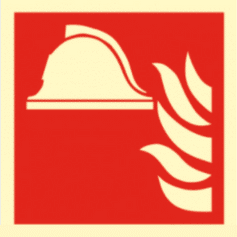
Material Sign for Emergency Teams
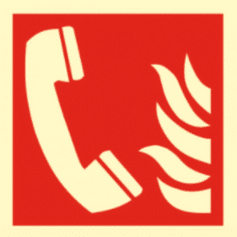
Emergency Telephone Sign
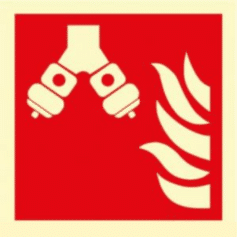
Dry Column Sign
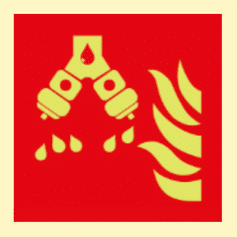
Wet Column Sign
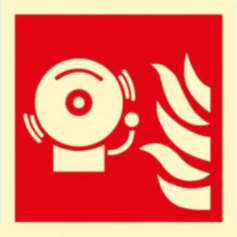
Sound Fire Alarm Signal
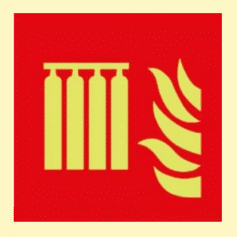
Extinguishing Equipment Battery Poster
Other signs of Protected Spaces or special indications:
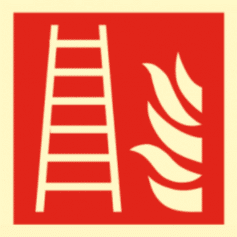
Emergency Stairs Sign
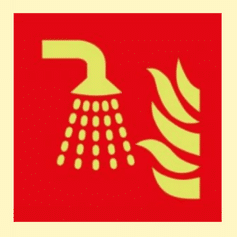
Space Protected by Water-based Suppression Systems
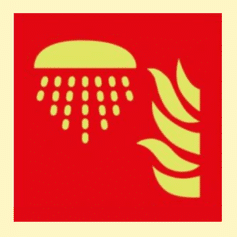
Space Protected by Extinguishing System
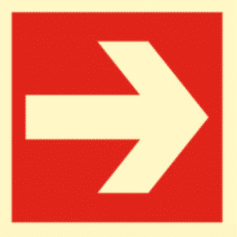
Fire Equipment Indication Sign

Fire Equipment Indication Sign
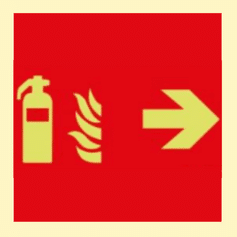
Fire Extinguisher Tour Sign
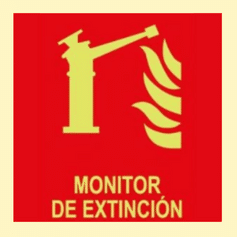
Extinction Monitor Signal
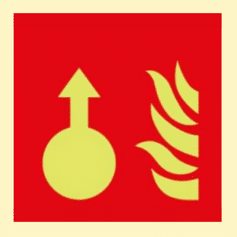
Firefighters Access Sign
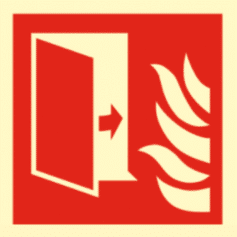
Fire Door Sign
Alarm Push Button Signal:
Another type of very common sign is usually the one that indicates that there is an alarm that can be pressed to notify the fire department or the local system of the building. These fire protection signs will let you know that in that area you can call for help in case of fire.
Although there may be variants, this signal is usually formed by a red circle.
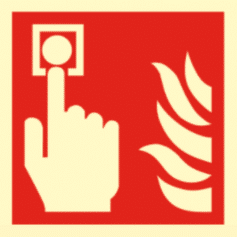
Alarm Push Button Signal
Exit Sign or No Exit Signs
Within the fire signals the exit signal is another one that occupies a very prominent place. This is because it is a sign that serves to guide users on the areas through which they can exit and evacuate the building.
These fire signs are usually placed on the top of the doors, in a way that helps us to know which are the appropriate exits in case of fire.
Within the exit signs you can find fire signs that tell you where the closest exits are. These are green signs where you can see a doll and an arrow.
With these signs you will have indicated the way to find the exit routes. Another sign of this type is also the emergency sign for stairs. It is a sign that will indicate with an arrow where you can find a ladder.
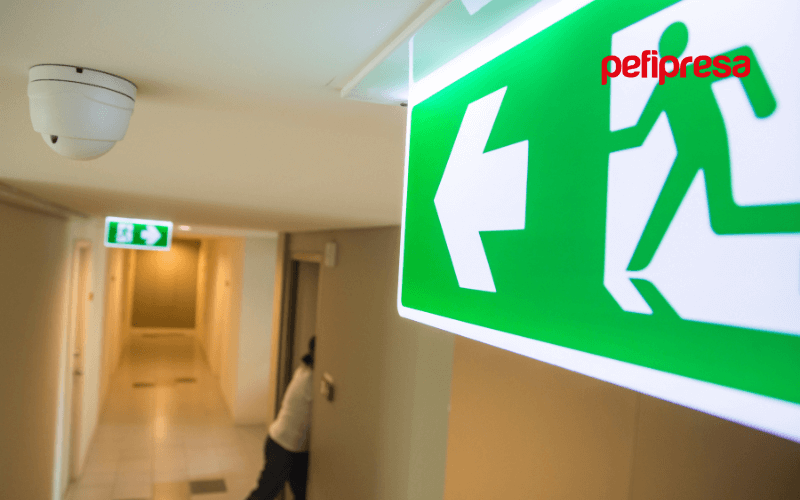
Another fire signal that is very common is the one that indicates that a certain area has no exit. This sign is also very important because it helps us know which areas of the building we should not go through.
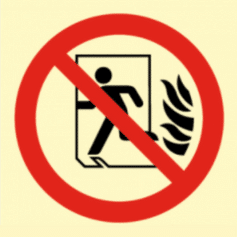
No Exit Sign in Case of Fire
USE or DO NOT USE signs in case of Fire
Among the fire protection signs, those that indicate what we should do in case of fire or what we should or should not use are also important. These fire safety signs are usually red with a white background and indicate something prohibited.
These signs are often placed on elevators and hoists, as they remind us not to use them in those cases or in certain locations of equipment such as BIEs where glass must be broken.

Do Not Use Elevator in Case of Fire Sign
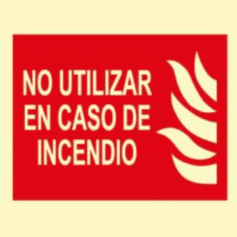
Do Not Use in Case of Fire Sign
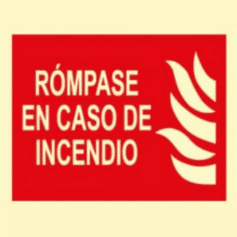
Break in Case of Fire Poster
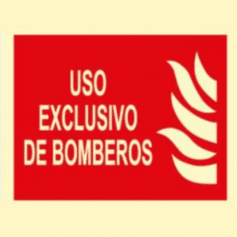
Firefighters Exclusive Use Sign
Regulations on fire signs and posters
It is important to bear in mind that all fire signs are subject to specific regulationswhich are responsible for establishing how these signs should be organized and manufactured.
The main objective of the regulations is none other than to homogenize the criteria of these signals in all the countries of the European Union. In this way, security levels are increasedand better results are achieved.
The standard that regulates these aspects is the standard UNE 23033-1:2019 and in the latest modifications it has introduced some important changes to take into account that we will tell you about in the following lines.
The regulations themselves establish the design criteria that all fire signs must meet. In this way, the criteria are well defined and this helps the population to get used to them and to be able to comply with them properly.
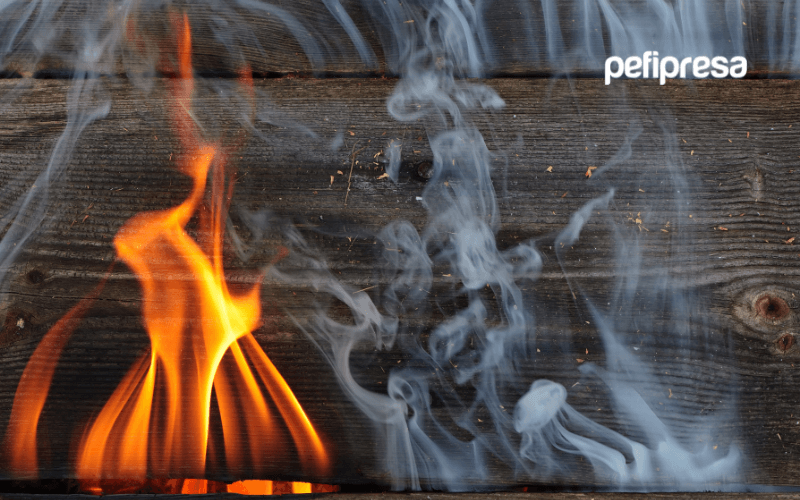
New signs have been incorporated into the current signage catalog up to now. It is about being able to detail more situations that did not have a signaling until now.
The norma UNE 23034 also incorporates evacuation signs that are being reviewed to offer the most appropriate depending on the situation and the buildings. Indicate that this Standard is currently being reviewed by CTN-23 Fire Safety. ( PNE 23034. Fire safety. Safety signage. Evacuation routes.)
The safety beacons are also being reviewed to ensure a higher level of visibility of these systems and to ensure that the areas or surfaces that must be marked are properly marked.
Another of the measures incorporated in the reform of the regulations that regulate these elements is that certain criteria have been established for the hydrant sign and to calculate the size of the signage based on the distance at which it may look.
Finally, in the reform of the regulations, some annexes have also been introduced in order to increase the information available on certain elements and signs. In some cases, complementary signs are incorporated with instructions and texts that help in the identification of the accesses for the first intervention bodies, firefighters.

